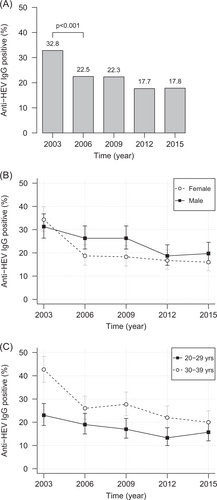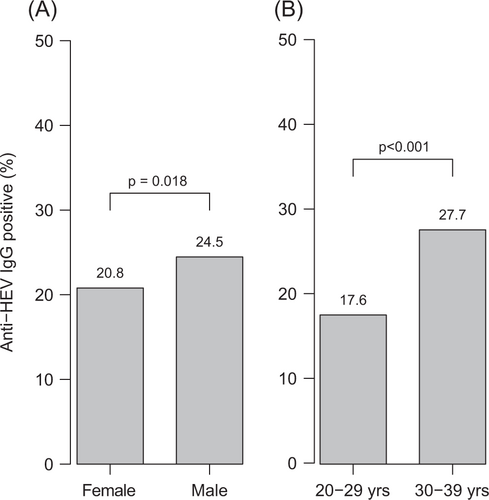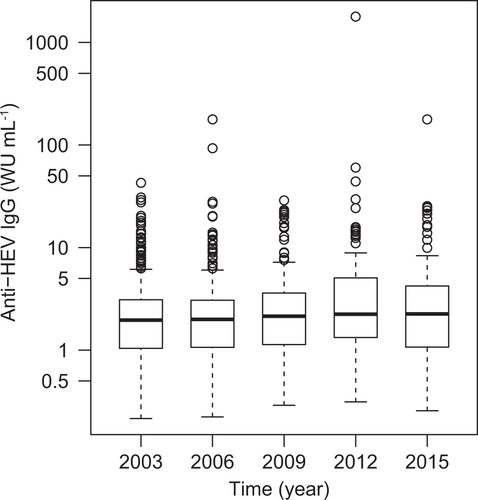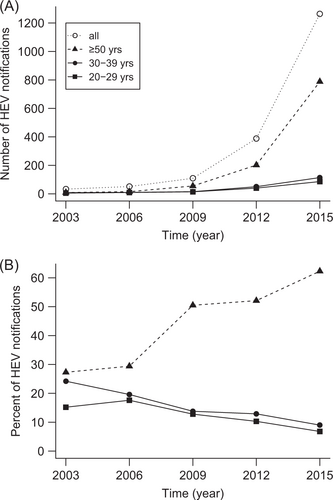Figures & data
Fig. 1 Trend of anti-HEV IgG prevalence in 2003, 2006, 2009, 2012, and 2015.a Overall prevalences. The chi square test with continuity correction was used to evaluate differences between the anti-HEV IgG prevalences of successive years. b Anti-HEV IgG prevalence and 95% CI divided by gender. c Anti-HEV IgG prevalence and 95% CI divided into age groups. Yrs, years

Anti-HEV IgG prevalence, overall, and by age and gender (percentages and absolute numbers of positives)
Fig. 2 Gender and age group analysis. Anti-HEV IgG sorted by (a) gender and (b) age groups. Differences in prevalence were evaluated using the chi square test with continuity correction. Yrs, years

Data are shown as box-and-whisker diagrams. The box represents the interquartile range (IQR) between the 25th (Q1) and 75th (Q3) percentiles and includes a median line. Lower and upper whiskers represent Q1−1.5 × IQR and Q3 + 1.5 × IQR, respectively. Open data points show extreme outliers. WU, World Health Organization units



